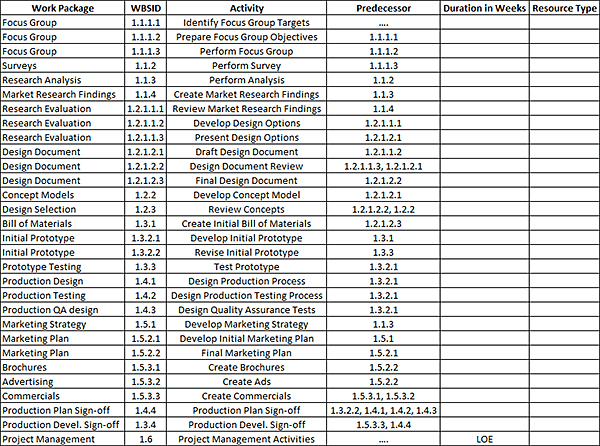Dependencies are the relationships among tasks which determine the order in which activities need to be performed. There are four (4) types of dependency relationships.
Types of dependencies
|
Finish to Start
|
 |
Predecessor must finish before Successor can start. [Land must be purchased before road building can start]
|
|
Start to Start
|

|
Predecessor must start before Successor can start. [Road excavating must start before Asphalt can be laid]
|
|
Finish to Finish
|

|
Predecessor must finish before Successor can finish. [Laying Asphalt must be complete before line painting can be completed]
|
|
Start to Finish
|

|
Predecessor must start before Successor can finish. [Road excavating must start before line painting can be completed]
|
Dependencies are the relationships of the preceding tasks to the succeeding tasks. Tasks may have multiple preceding tasks and multiple succeeding tasks. The most common dependency relationship is a finish-to-start relationship. Task P (predecessor) must be finished before task S (successor) can start. The least common relationship is the start-to-finish relationship. Project Insight, project management software, supports all four dependency relationships.
Product Development Task List

The chart above illustrates how a Product Development Task List might appear after the project team determines the task relationships. In our example, only finish-to-start relationships were utilized.
It's generally simpler to organize all project tasks in terms of a finish-to-start relationship and an 'as soon as possible' constraint. This dependency type is the easiest for stakeholders to grasp and often results in an extended project schedule, providing more schedule 'slack.' You may then employ other types of relationships to reduce the overall project timeline. Using finish-to-start and 'as soon as possible,' you can adjust the schedule in Project Insight, project management software, with just a few clicks.
<< Previous |
Next >>
Project resource allocation and resource management